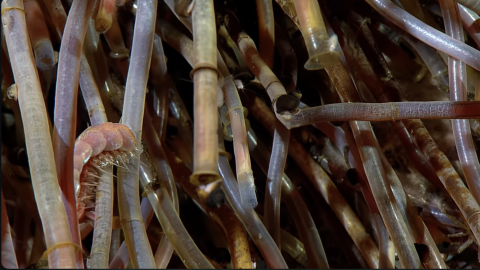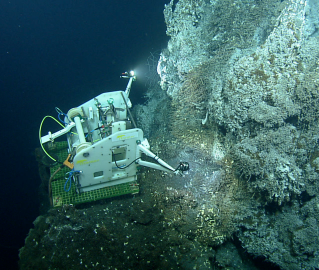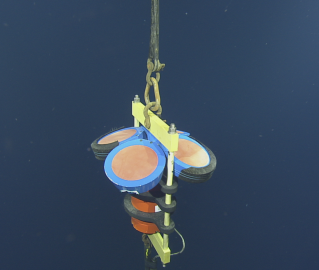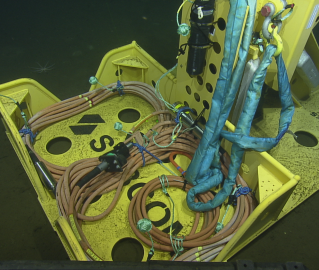The Evolution of a Whale Fall
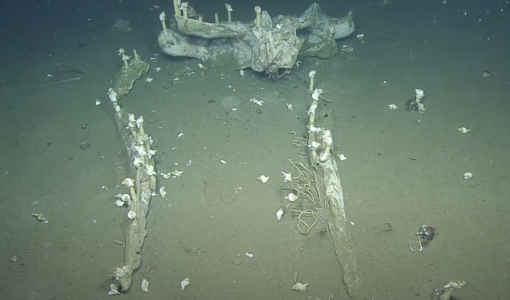
A whale fall is a whale carcass that has sunk to the bottom of the ocean and provided a concentrated source of food for ocean scavengers- thereby creating a mini-ecosystem. As the carcass continues to decompose, different types of organisms will feed and live on it. By revisiting the same whale fall site year after year, scientists can observe the evolution of these ecosystems.
The whale’s structure becomes habitat for a bonanza of biodiversity, ranging from worms to sharks to crabs. In 2019, When ROV Hercules came across the whale fall on Davidson Seamount within the borders of Monterey Bay National Marine Sanctuary, they spotted eel pouts, octopus, and polychaete worms--like the bone-eating Osedax spp. worms.
During our NA161 expedition with Ocean Networks Canada (ONC), OET and ONC plan to revisit a familiar whale fall site near Clayoquote Slope. The site lies 1,250 meters deep and about 20 kilometers from the Cascadia subduction zone, where the Juan de Fuca Plate subducts beneath the North American Plate. Near this site is also a cold vent called Bullseye Vent, formed when gasses like methane are expelled from the sediment.
Last year, during the NA151 expedition, the Corps of Exploration aboard E/V Nautilus dove on a whale skeleton approximately 16 meters long. Although we can’t confirm what species the bones belonged to, ONC Senior Scientist Fabio De Leo speculates it could be a gray whale, due to the site laying in the species’ known migration area.
This whale fall was first discovered in 2009 by an expedition led by the Monterey Bay Aquarium Research Institute. ONC began observing the site in 2012 during its yearly visits to maintain the observatory's seafloor instruments at Bullseye, where scientists are also interested in studying and monitoring the processes controlling methane gas seeping from the seafloor. They inspected the whale fall with ROV video surveys and sampling in 2012, 2020, and again during our current expedition to examine the rates of decomposition and degradation of the whale skeleton and to understand how the marine fauna associated with the whale remains have evolved since its first discovery.
Revisiting whale falls over time helps scientists understand these unique mini-ecosystems and how life in the deep sea continues to defy expectations. Stay tuned as we plan to set eyes on the site once again during the NA161 expedition!
Food is scarce in the deep ocean, making a whale fall an especially exciting event for the benthic fauna nearby including gastropods, ispods, and lithodid crabs. There are even tube worms that scientists speculate could have been on the carcass for over a decade. The continued surveys of the whale will be integral in understanding the decomposition process.
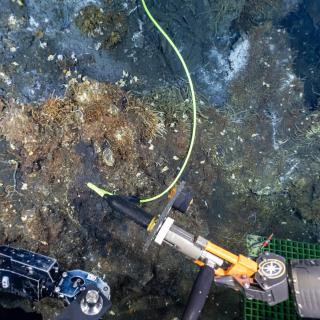
#ONCAbyss Summer 2024
This expedition brings E/V Nautilus to the Northeastern Pacific Ocean for the eighth year of the partnership between Ocean Networks Canada and OET.
